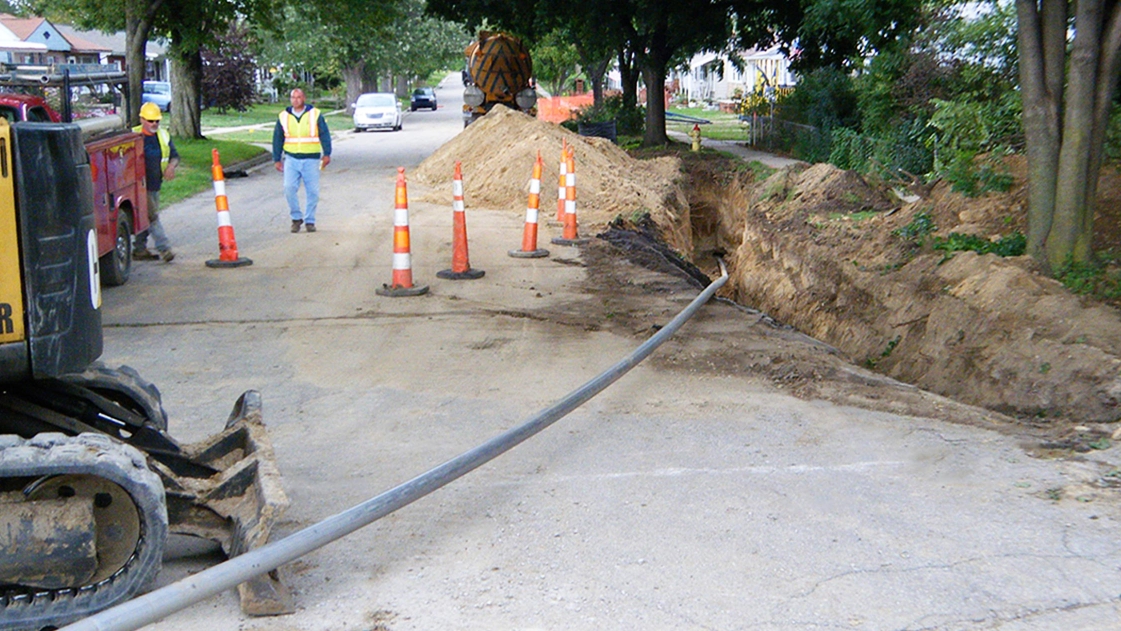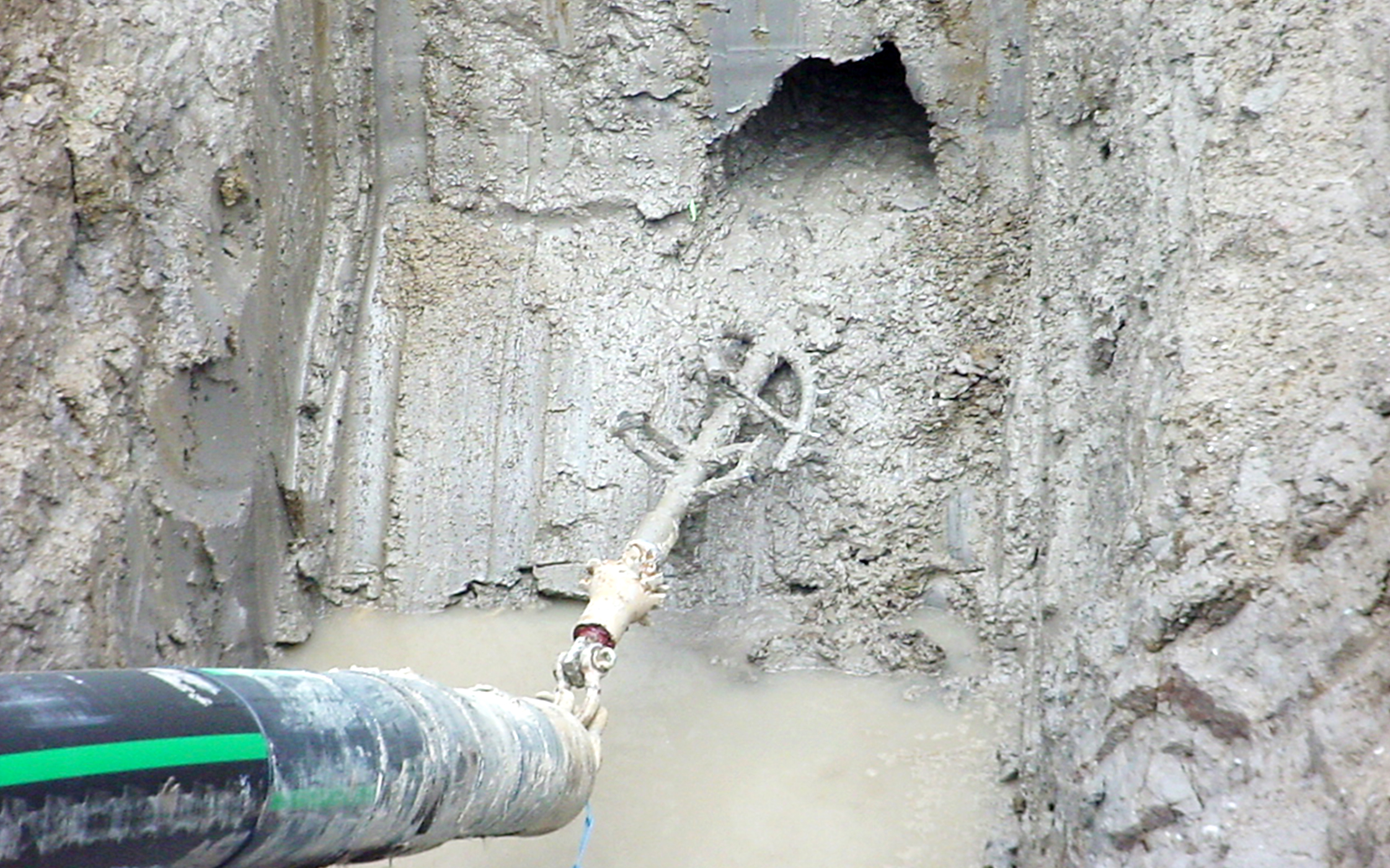Local and Regional Decision Making in the Use of Trenchless Technology

The use of trenchless technology for the installation, replacement and renewal of underground utilities with minimal excavation and surface disruption is growing throughout the country as we struggle to replace our aging infrastructure. As a member of the board of directors for the Midwest Society for Trenchless Technology (MSTT), I work to promote trenchless technology education and development for public benefit in the Midwest, mostly by conducting training and education at seminars, short courses and field demonstrations.
Recently, I spoke on the trenchless technology topic, “Pipe Bursting for Water Mains” at the Michigan – American Water Works Association (MI-AWWA) Regional Conferences held in four regions of the state. At each conference, I polled attendees on whether their communities had used this specific method for the replacement or renewal of deteriorating or undersized water mains. The responses varied widely—from a majority of the attendees in some regions using it, to very few or almost none in others.
These responses led me to think about the possible reasons they varied so widely. Even though trenchless technology is gaining increasing acceptance in many communities nationwide, different factors may be driving what methodologies are ultimately chosen for the work, and awareness of some of them may help you with a choice whether to use trenchless tech in the future.
Factors Affecting the Use of Trenchless Tech
Pre-Qualification Requirements: Often, owners and engineers will include certain pre-qualifications that contractors must meet when bidding on trenchless projects. Many require proven experience with similar projects, sometimes with a track record of a certain defined minimum of trenchless projects performed. Additionally, certifications and training records must be in place prior to bidding on some trenchless contracts.
Local Contractor Influence: Local contractors are an important part of a community, and often are opinion leaders and local experts on its underground infrastructure. Due to prior investments and work history, it’s unlikely that a traditional open trench utility contractor is going to promote the use of trenchless technology on a project over open-cut excavation that’s the core of their business.
Investments to Perform Specialized Work: Trenchless projects typically require certain specialized tools, equipment and training to properly perform the work successfully. Some contractors have recognized the value in being able to perform them and have invested the capital expense needed to acquire trenchless equipment, but many have not. There’s also an investment in the necessary training and certification for employees performing trenchless work, adding more capital expenditures that a community’s budget may or may not support.
Lack of Education and Understanding: Communities typically minimize the different types of material in their public utility systems because it makes it easier to perform needed maintenance. Sometimes, communities don’t even consider trenchless technology for a repair or replacement because they assume it won’t work based on their system material.
For example, a water utility may know that the trenchless technology methods of Horizontal Directional Drilling (HDD) and Pipe Bursting typically utilize HDPE pipe and fusible pipe, respectively, but their water system material is ductile iron pipe, so they don’t consider a trenchless repair option. However, with a bit of education, they’d learn that technical advances in trenchless technology prove that ductile iron pipe can often be used in both of those methods.
Other times, utility owners are uninformed about the cost of trenchless technology and assume it’s too expensive. However, even while some trenchless projects may cost the same or slightly more than comparable open-cut in terms of contract price, the decrease in total effective costs compared to open-cut makes trenchless technology very attractive.
Open-cut work includes the social costs of traffic and business disruption over a length of time and significant cleanup, as well as reduced pavement life, environmental mitigation and other negative impacts. These factors can all increase the total effective cost of open-cut construction. Trenchless reduces those direct construction impacts to constituents and customers and recycles existing easements and utility alignment. These are benefits that don’t necessarily register on the bid sheet, but are nonetheless very valuable to the end user.
Trenchless Technology is a Forward-Thinking Choice
In addition to minimized excavation and surface disruption and reduced social costs, trenchless technology is kinder to the environment. Traditional open-cut methods and equipment for underground infrastructure work can be highly polluting, and research has shown that trenchless projects produce substantially fewer greenhouse gases by as much as 90% in comparison.
With continued trenchless technology educational efforts by professional organizations and individual outreach, more communities will begin to accept those methodologies as viable options when rehabilitating or replacing their aging infrastructure. Continued education will help communities and utility owners understand the inherent value of these methodologies and continue to adopt them in increasingly greater numbers as they consider how to maintain and operate their important infrastructure assets for years to come.

